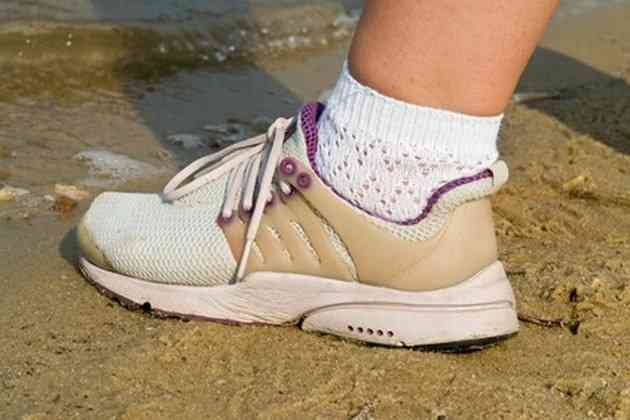Foot Pain After Lifting Heavy Weights

According to a 2003 article in the "British Journal of Sports Medicine," a flat or high arch is one of many risk factors for lower extremity injuries including foot injuries. Common injuries that cause foot pain are plantar fasciitis, stress fractures and muscle strains. Treatment varies depending on the injury or cause, but rest and ice may help alleviate foot pain. Consult your physician if your pain persists or worsens.
 A man is dead lifting heavy weight. (Image: takoburito/iStock/Getty Images)
A man is dead lifting heavy weight. (Image: takoburito/iStock/Getty Images)Risk Factors
Using heavy resistance with weight-bearing exercises such as squats, deadlifts and lunges places a significant amount of stress and pressure on your feet. If you overtrain or have inadequate recovery time between weightlifting sessions, your body and feet may not heal between sessions, causing inflammation and foot pain. Shoes that do no provide enough support and cushion or are too tight may lead to foot pain as well. Your fitness level, weightlifting technique, flexibility and previous foot or ankle injuries also impact your foot health.
Injuries
Injuries that cause foot pain among other symptoms include plantar fasciitis, muscle strains, stress fractures, tendinitis and arthritis. Damage or impingement to your nerves in your foot can also lead to foot pain and include Morton's neuroma, tarsal tunnel syndrome and neuropathy.
Treatment
Stop all painful activities and ice your foot to reduce inflammation and pain. Take over-the-counter pain medications such as acetaminophen, if your pain is not alleviated with rest and ice. Apply heat 48 to 72 hours following the onset of your foot pain. Apply heat prior to activities and ice following activities in 20-minute increments. Lightly stretch your foot, ankle and calf to improve flexibility and reduce pain. Stretches include the standing calf stretch, ankle circles and seated plantar fascia stretch. For the plantar fascia stretch, gently pull back on your toes until you feel a stretch on the bottom of your foot. Massaging the bottom of your foot with a tennis ball can also help alleviate discomfort associated with plantar fasciitis. Stress fractures and chronic tendinitis may require immobilization with a cast or walking boot. With severe foot injuries, surgery may be necessary when conservative treatment is unsuccessful.
Weightlifting Modifications
You may continue weightlifting when suffering from foot pain, as long as you are free of pain and in a non-weight bearing position. For example, you may replace squats and lunges with seated leg extension, knee flexion, hip abduction and adduction with resistance machines. Once pain subsides, you may return to weight-bearing resistance exercises. Start with lighter weight and progress slowly, increasing your weight a few pounds each week.
Prevention
Perform strength exercises like calf raises and ankle flexion and extension with a resistance band to prevent future injuries and foot pain. Warmup and stretch muscles before weightlifting to maintain muscle flexibility, and wear shoes and orthotics that provide adequate arch support and fit comfortably. Weightlift two to three times a week but not on consecutive days to prevent overtraining and injury.




